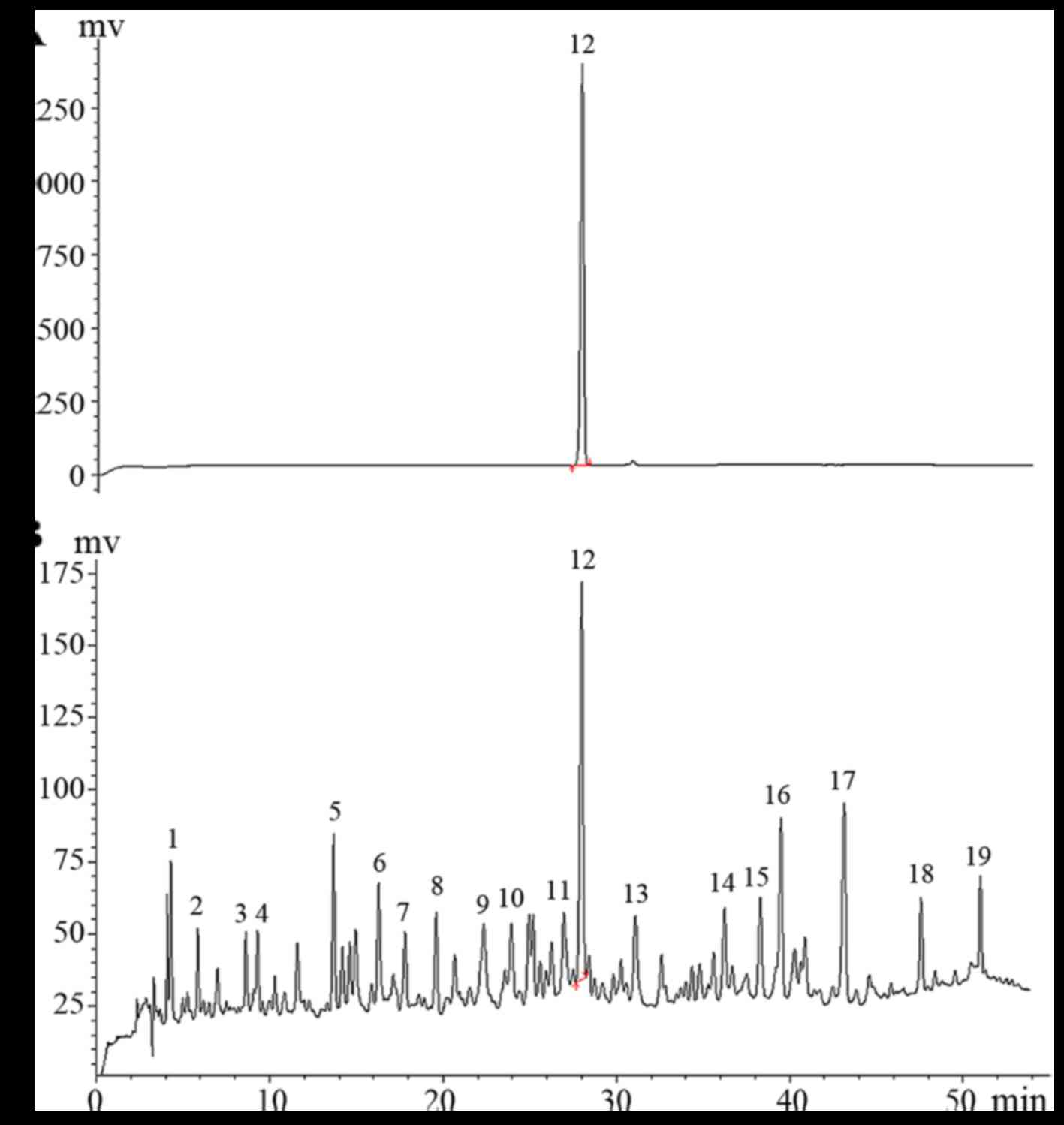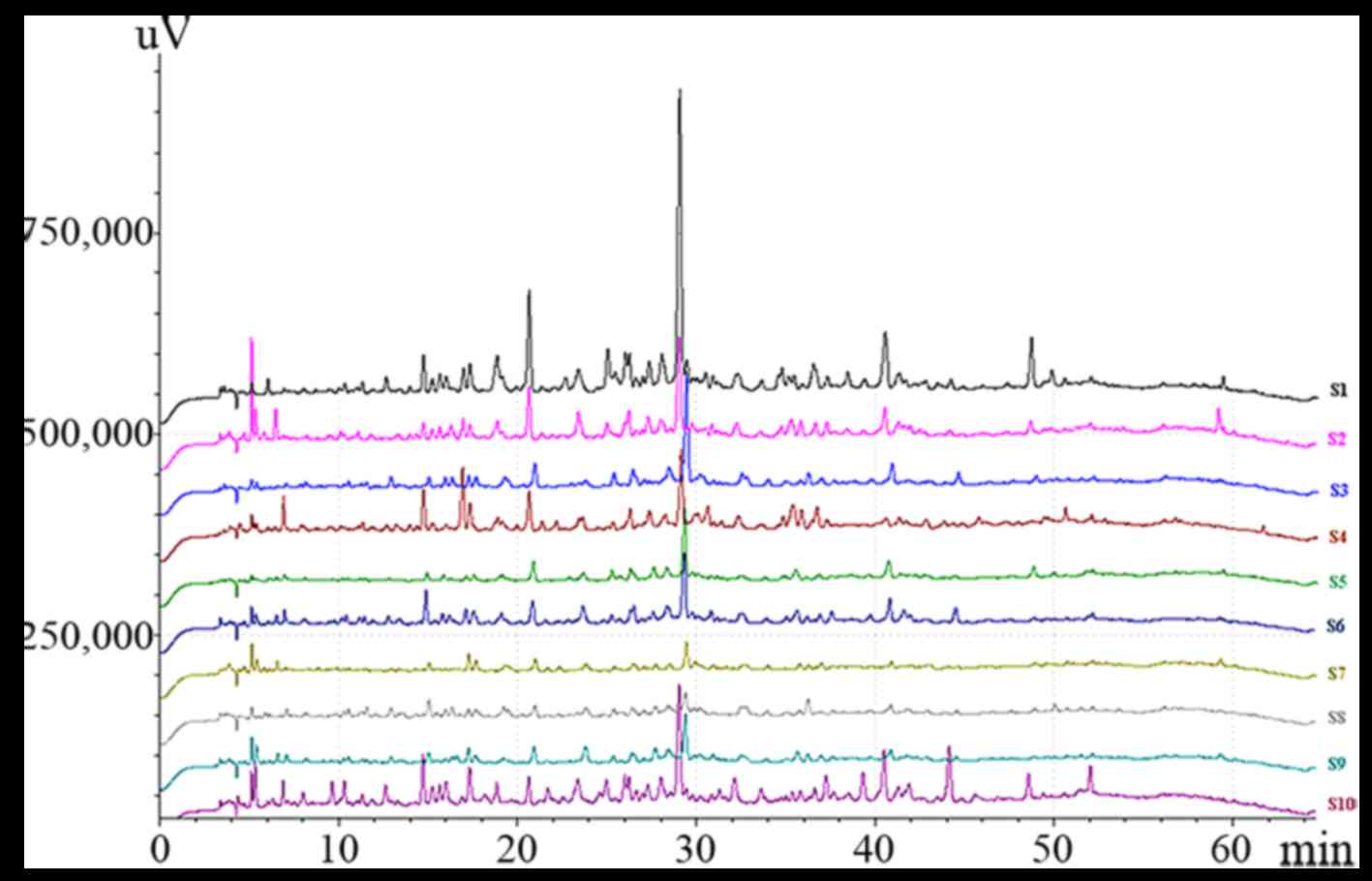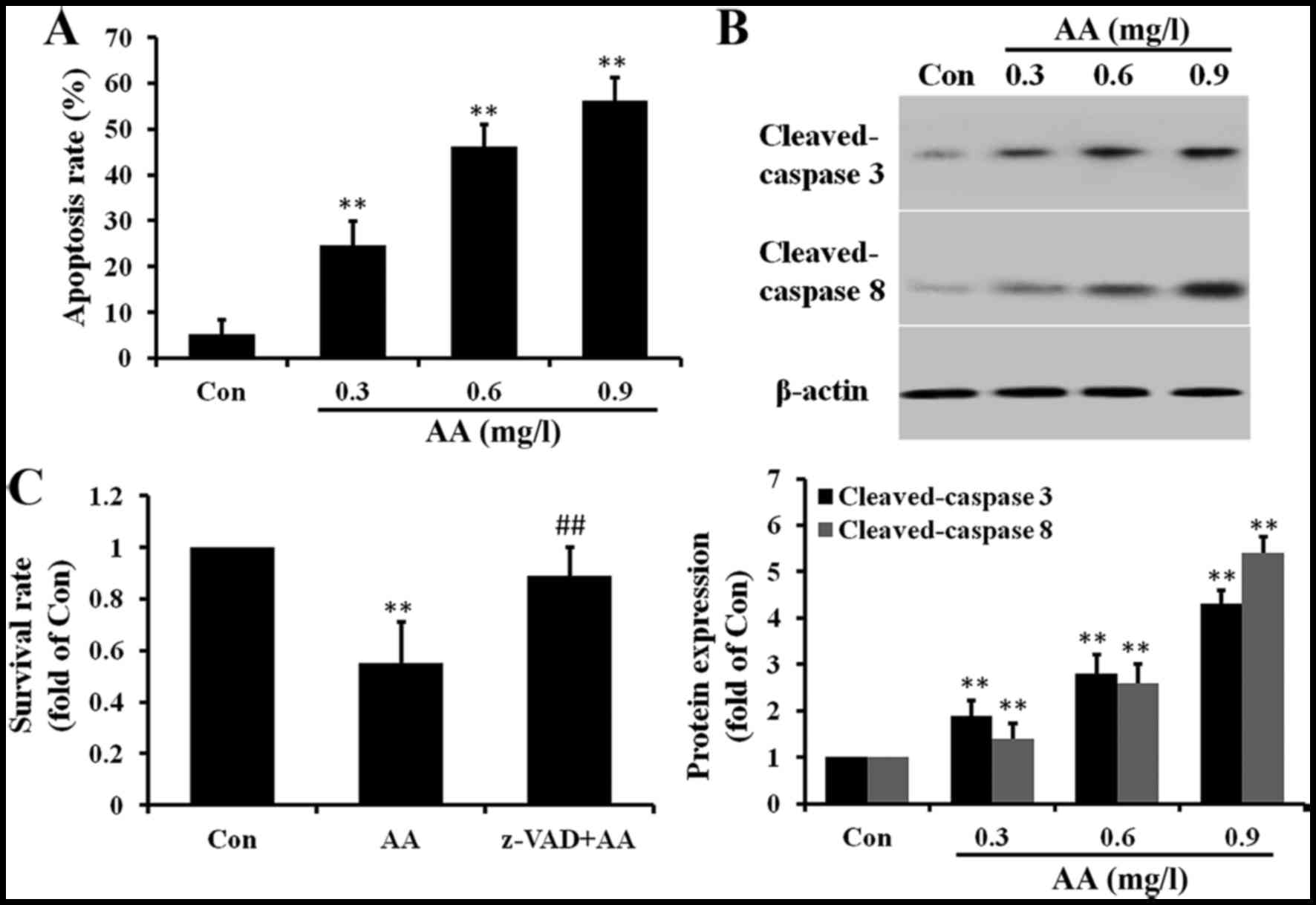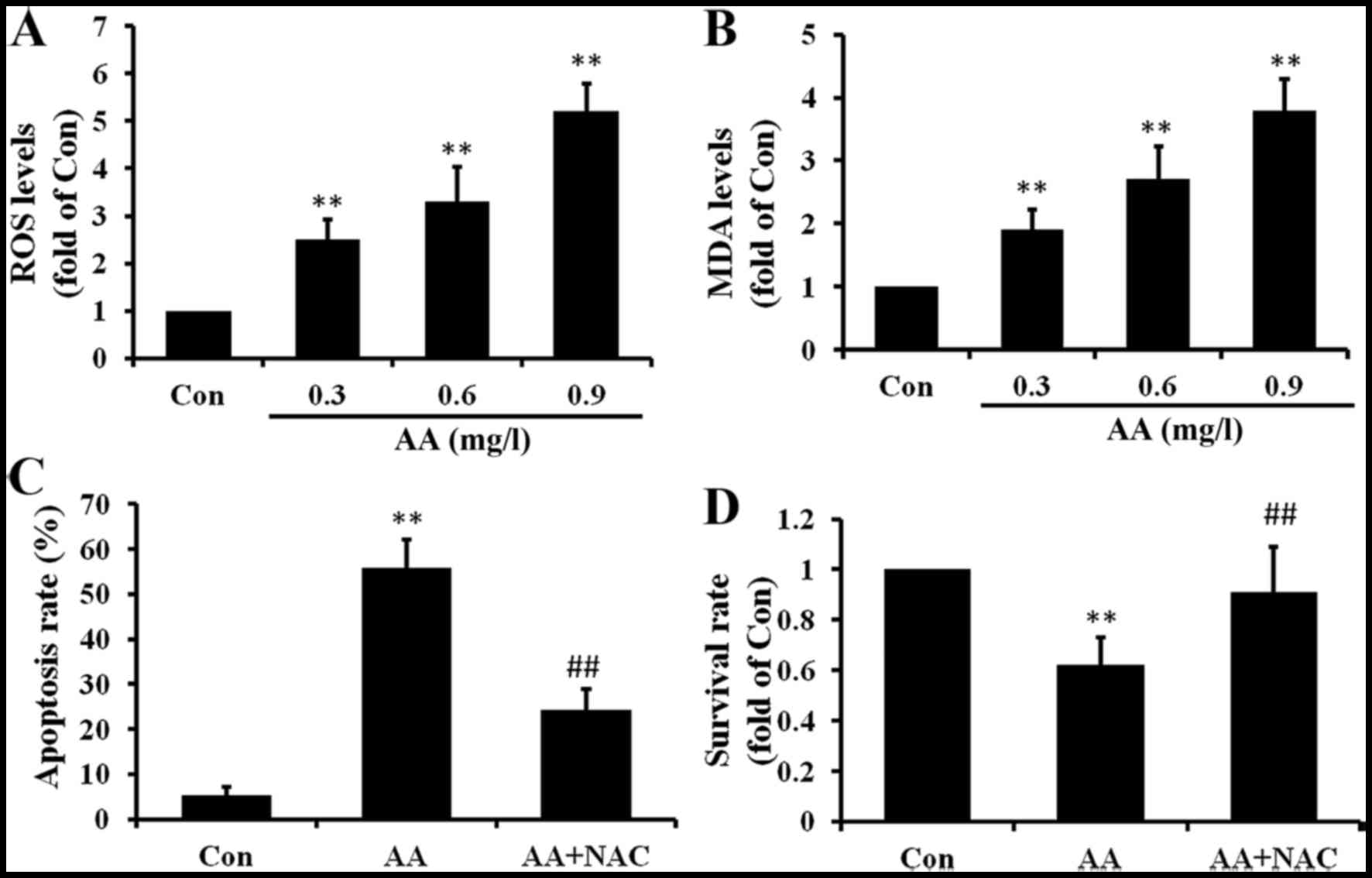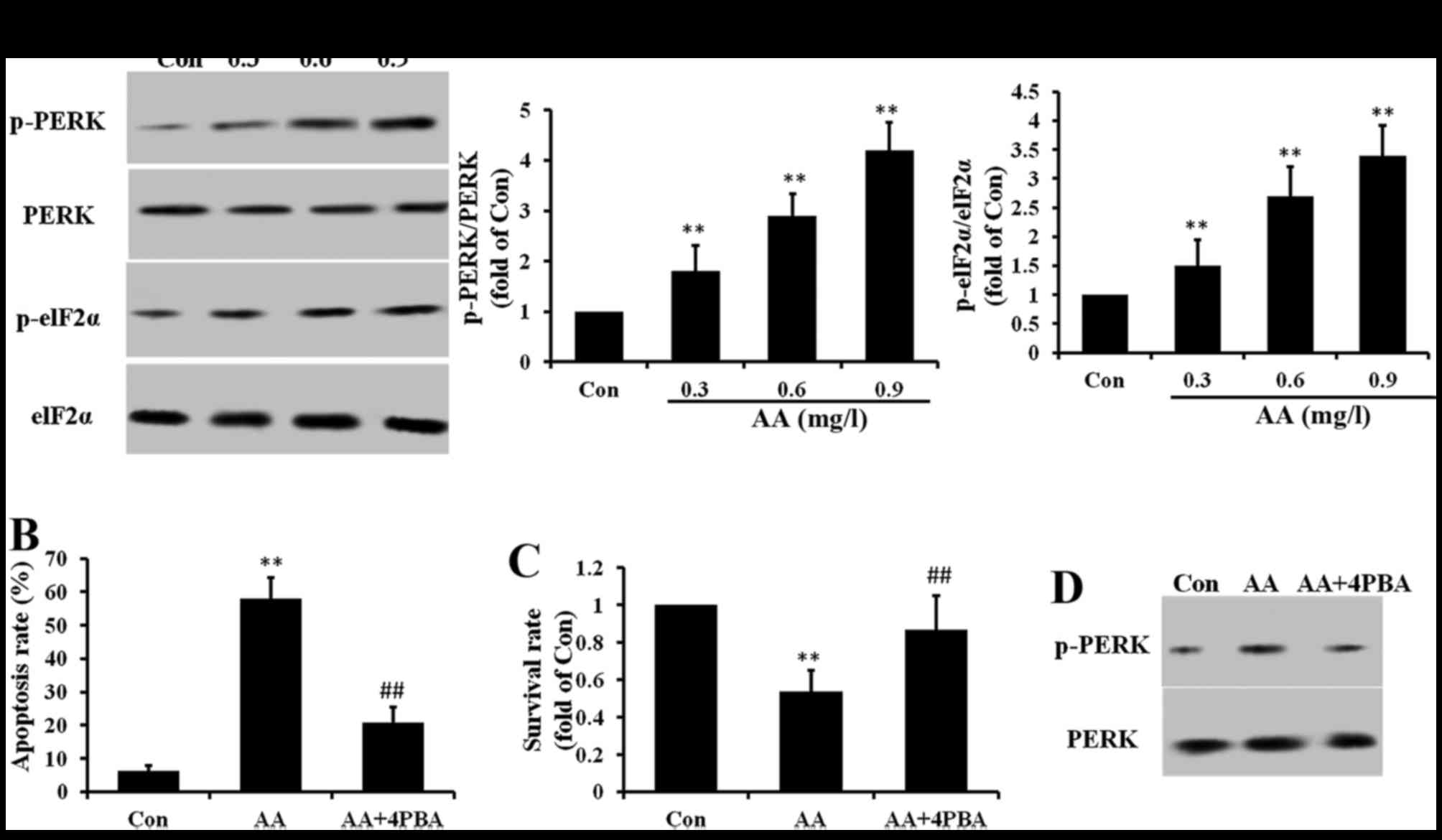|
1
|
Li H, Wang SW, Zhang BL, Xie YH, Yang Q,
Cao W and Wang JB: Simultaneous quantitative determination of 9
active components in traditional Chinese medicinal preparation
ShuangDan oral liquid by RP-HPLC coupled with photodiode array
detection. J Pharm Biomed Anal. 56:820–824. 2011. View Article : Google Scholar : PubMed/NCBI
|
|
2
|
SW W: Molecular composition theory of
Chinese medicinal materials and modern traditional Chinese
medicine. J Asia-Pac Tradit. 4:9–12. 2008.
|
|
3
|
Xie PS and Leung AY: Understanding the
traditional aspect of Chinese medicine in order to achieve
meaningful quality control of Chinese materia medica. J Chromatogr
A. 1216:1933–1940. 2009. View Article : Google Scholar
|
|
4
|
Zhang Z, Li Q, Li Q, Du S, Zhou Y, Lv C,
Zhao Y, Wang Y and Zhang N: Simultaneous determination of nineteen
major components in Qi She Pill by ultra-high-performance liquid
chromatography-tandem mass spectrometry. Acta Pharm Sin B.
4:384–393. 2014. View Article : Google Scholar
|
|
5
|
Khan IA: Issues related to botanicals.
Life Sci. 78:2033–2038. 2006. View Article : Google Scholar : PubMed/NCBI
|
|
6
|
Kim HM, Lee JS, Sezirahiga J, Kwon J,
Jeong M, Lee D, Choi JH and Jang DS: A new canthinone-type alkaloid
isolated from Ailanthus altissima Swingle. Molecules. 21:E6422016.
View Article : Google Scholar : PubMed/NCBI
|
|
7
|
Howard JL: Ailanthus altissima; Fire
Effects Information System. US Department of Agriculture, Forest
Service, Rocky Mountain Research Station, Fire Sciences Laboratory;
Fort Collins, CO, USA: 2004. 2014
|
|
8
|
Kowarik I and Saumel I: Biological flora
of central Europe: Ailanthus altissima (Mill.) swingle. Perspect
Plant Ecol Evol Syst. 8:302007. View Article : Google Scholar
|
|
9
|
Jin MH, Yook J, Lee E, Lin CX, Quan Z, Son
KH, Bae KH, Kim HP, Kang SS and Chang HW: Anti-inflammatory
activity of Ailanthus altissima in ovalbumin-induced lung
inflammation. Biol Pharm Bull. 29:884–888. 2006. View Article : Google Scholar : PubMed/NCBI
|
|
10
|
Kang TH, Choi IY, Kim SJ, Moon PD, Seo JU,
Kim JJ, An NH, Kim SH, Kim MH, Um JY, et al: Ailanthus altissima
swingle has anti-anaphylactic effect and inhibits inflammatory
cytokine expression via suppression of nuclear factor-kappaB
activation. In Vitro Cell Dev Biol Anim. 46:72–81. 2010. View Article : Google Scholar
|
|
11
|
Casinovi CG, Ceccherelli P, Fardella G and
Grandolini G: Isolation and structure of a quassinoid from
Ailanthus glandulosa. Phytochemistry. 22:2871–2873. 1983.
View Article : Google Scholar
|
|
12
|
Kubota K, Fukamiya N, Hamada T, Okano M,
Tagahara K and Lee KH: Two new quassinoids, ailantinols A and B,
and related compounds from Ailanthus altissima. J Nat Prod.
59:683–686. 1996. View Article : Google Scholar : PubMed/NCBI
|
|
13
|
Kosuge K, Mitsunaga K, Koike K and Ohmoto
T: Studies on the constituents of Ailanthus integrifolia. Chem
Pharm Bull (Tokyo). 42:1669–1671. 1994. View Article : Google Scholar
|
|
14
|
Hwang SG, Lee HC, Kim CK, Kim DG, Lee GO,
Yun YG and Jeon BH: Effect of Ailanthus altissima water extract on
cell cycle control genes in Jurkat T lymphocytes. Yakhak Hoechi.
46:18–23. 2002.
|
|
15
|
Tamura S, Fukamiya N, Mou XY, Mukainaka T,
Tokuda H, Nishino H, Tagahara K, Koike K, Lee KH and Okano M:
Conversion of quassinoids for enhancement of inhibitory effect
against Epstein-Barr virus early antigen activation. Introduction
of lipophilic side chain and esterification of diosphenol. Chem
Pharm Bull (Tokyo). 48:876–878. 2000. View Article : Google Scholar
|
|
16
|
Okunade AL, Bikoff RE, Casper SJ, Oksman
A, Goldberg DE and Lewis WH: Antiplasmodial activity of extracts
and quassinoids isolated from seedlings of Ailanthus altissima
(Simaroubaceae). Phytother Res. 17:675–677. 2003. View Article : Google Scholar : PubMed/NCBI
|
|
17
|
Fukamiya N, Lee KH, Muhammad I, Murakami
C, Okano M, Harvey I and Pelletier J: Structure-activity
relationships of quassinoids for eukaryotic protein synthesis.
Cancer Lett. 220:37–48. 2005. View Article : Google Scholar : PubMed/NCBI
|
|
18
|
Rosati A, Quaranta E, Ammirante M, Turco
MC, Leone A and De Feo V: Quassinoids can induce mitochondrial
membrane depolarisation and caspase 3 activation in human cells.
Cell Death Differ. 11(Suppl 2): S216–S218. 2004. View Article : Google Scholar : PubMed/NCBI
|
|
19
|
Wang Y, Wang WJ, Su C, Zhang DM, Xu LP, He
RR, Wang L, Zhang J, Zhang XQ and Ye WC: Cytotoxic quassinoids from
Ailanthus altissima. Bioorg Med Chem Lett. 23:654–657. 2013.
View Article : Google Scholar : PubMed/NCBI
|
|
20
|
Yang XL, Yuan YL, Zhang DM, Li F and Ye
WC: Shinjulactone O, a new quassinoid from the root bark of
Ailanthus altissima. Nat Prod Res. 28:1432–1437. 2014. View Article : Google Scholar : PubMed/NCBI
|
|
21
|
Ishibashi M, Tsuyuki T and Takahashi T:
Bitter principles of Ailanthus altissima SWingLE. Conversion of
ailanthone into shinjulactone C. Bull Chem Soc Jpn. 58:2357–2360.
1985. View Article : Google Scholar
|
|
22
|
Jaziri M, Diallo B and Vanhaelen M:
Separation of quassinoids from Ailanthus altissima by high-speed
counter-current chromatography. J Chromatogr A. 538:227–229. 1991.
View Article : Google Scholar
|
|
23
|
Furey A, Moriarty M, Bane V, Kinsella B
and Lehane M: Ion suppression; a critical review on causes,
evaluation, prevention and applications. Talanta. 115:104–122.
2013. View Article : Google Scholar : PubMed/NCBI
|
|
24
|
Jin XF, Lu YH, Wei DZ and Wang ZT:
Chemical fingerprint and quantitative analysis of Salvia plebeia
R.Br. by high-performance liquid chromatography. J Pharm Biomed
Anal. 48:100–104. 2008. View Article : Google Scholar : PubMed/NCBI
|
|
25
|
Tang D, Yang D, Tang A, Gao Y, Jiang X,
Mou J and Yin X: Simultaneous chemical fingerprint and quantitative
analysis of Ginkgo biloba extract by HPLC-DAD. Anal Bioanal Chem.
396:3087–3095. 2010. View Article : Google Scholar : PubMed/NCBI
|
|
26
|
Wei H, Sun L, Tai Z, Gao S, Xu W and Chen
W: A simple and sensitive HPLC method for the simultaneous
determination of eight bioactive components and fingerprint
analysis of Schisandra sphenanthera. Anal Chim Acta. 662:97–104.
2010. View Article : Google Scholar : PubMed/NCBI
|
|
27
|
Liu EH, Qi LW, Li K, Chu C and Li P:
Recent advances in quality control of traditional Chinese
medicines. Comb Chem High Throughput Screen. 13:869–884. 2010.
View Article : Google Scholar : PubMed/NCBI
|
|
28
|
Zhong XK, Li DC and Jiang JG:
Identification and quality control of Chinese medicine based on the
fingerprint techniques. Curr Med Chem. 16:3064–3075. 2009.
View Article : Google Scholar : PubMed/NCBI
|
|
29
|
Li T, Zhuang S, Wang Y, Wang Y, Wang W,
Zhang H, Chen L, Wang D, Zhou Z and Yang W: Flavonoid profiling of
a traditional Chinese medicine formula of Huangqin Tang using high
performance liquid chromatography. Acta Pharm Sin B. 6:148–157.
2016. View Article : Google Scholar : PubMed/NCBI
|
|
30
|
Ostrom QT, Gittleman H, de Blank PM,
Finlay JL, Gurney JG, McKean-Cowdin R, Stearns DS, Wolff JE, Liu M,
Wolinsky Y, et al: American brain tumor association adolescent and
young adult primary brain and central nervous system tumors
diagnosed in the United States in 2008–2012. Neuro Oncol. 18(Suppl
1): i1–i50. 2016. View Article : Google Scholar
|
|
31
|
Adamson C, Kanu OO, Mehta AI, Di C, Lin N,
Mattox AK and Bigner DD: Glioblastoma multiforme: A review of where
we have been and where we are going. Expert Opin Investig Drugs.
18:1061–1083. 2009. View Article : Google Scholar : PubMed/NCBI
|
|
32
|
Levin VA, Tonge PJ, Gallo JM, Birtwistle
MR, Dar AC, Iavarone A, Paddison PJ, Heffron TP, Elmquist WF,
Lachowicz JE, et al: CNS anticancer drug discovery and development
conference white paper. Neuro Oncol. 17(Suppl 6): vi1–vi26. 2015.
View Article : Google Scholar : PubMed/NCBI
|















